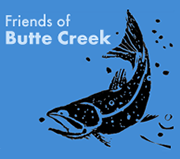 |
|
|
Home :: Creek Watching :: The State of Salmon 2009
The State of Salmon 2009California used to be the State of Salmon. A hundred years ago the salmon canneries in the Sacramento Delta area of the state were booming. Millions of pounds of Sacramento-San Joaquin Basin salmon were canned every year for consumption across the country. Salmon was like canned tuna is today. I remember my mother telling me how much she disliked salmon because her mother made her eat it all the time because it was the cheapest protein source. As progressive as California has always been, our ancestor did exactly what the Kings of Europe did, and exactly what the settlers on the East Coast of the United States did, dammed and diverted the rivers, destroyed the freshwater habitat with logging and farming, and allowed the over harvest of salmon. Although restoration efforts in Europe and New England have great ambition and potential, they have suffered through hundreds of years of meager salmon runs and may never have more that remnant populations, “boutique runs” as referred to by one noted biologist. I guess someone forgot to read the history books on salmon. The second year in a row of complete salmon fishing closure in California is starting to gain the attention of non anglers, or in other words, the general population who value the heritage of California, the consumers who recognize the incredible health and economic value of California salmon, and conservationists who recognize their value as an indicator species. Research in river basins across the West have shown the incredible food web connections that salmon facilitate when they bring back nutrients from the oceans. The nutrients the salmon provide supports numerous trophic levels in our water basins, from the insects, to the birds, mammals, crustaceans, and amphibians. All of which help support the grasses, shrubs, and trees. When salmon are gone, so are the best nutrients that support all the components of healthy water systems. Sacramento-San Joaquin salmon runs hit rock bottom last year. A total of approximately 66,000 salmon returned from the ocean and back to one of a dozen or so basins that still support remnant populations. In general, salmon populations supported by hatcheries on Battle Creek, Feather River, American River, Merced, and Mokulemne, all plummeted. Probably a mere 45,000 hatchery reared fish made it home compared to 100's of thousands in a normal year. Less than 20,000 wild salmon returned to their native streams to spawn naturally. Butte Creek once again led the way with over 11,000 wild spring run salmon. Clear Creek outside of Redding had a handful of spring run and several thousand wild fall run salmon. The rest of the spring run streams had only a couple thousand total and the few wild fall run that still return to our system was in the hundreds. Big Chico Creek, sadly had no fish that spawned in 2008 according to the Department of Fish and Game. What is most concerning is that the wild run on Butte Creek is now facing a crash unseen in more than a decade. Estimates range from 1500 to 3000 returning adults, the lowest number since 1997. For all the great restoration projects on Butte Creek and the incredible runs of recent memory, it is obviously not enough to prop up the failures of all the other streams and the collapse of the Delta ecosystem. The predators in the ocean will continue to take their share until they get hungry and move on to other species. Unfortunately we may have dropped below a baseline population that can support Orcas, Salmon Sharks and other marine species and maintain sustainable returns to our rivers. It is time for a new Salmon Paradigm. Can we let the iconic King Salmon of California disappear? Are we completely resigned to eating only Alaskan Wild Salmon at a much higher cost? Will cheap, environmentally destructive feed lot Atlantic Salmon continue to dominate our stores and restaurants? Will our rivers and streams slowly starve for lack of marine nutrients? Will we let the Water Buffalos suck all the water out of system? Think about how far reaching the implications are. Americans rallied to protect and recover the Bald Eagle and have had great success. We now have resident pairs of eagles in Butte Creek Canyon and hundreds flock to the valley in the winter to feed along our streams. Let’s step up and do the same for the salmon. Contact your local, state and federal legislators. Tell them you support Wild Salmon. Yes we can recover the State of Salmon! You can help support the efforts of the Friends of Butte Creek by joining online or at the upcoming SYRCL Wild and Scenic Film Festival. The 3rd Annual event is September 17, in the Sierra Nevada Big Room at 6 PM and is hosted by Friends of Butte Creek and sponsored in part by the Sierra Nevada Brewing Company. Six great films from the two day SYRCL event in Nevada City will be featured along with a silent auction, raffle and giveaways. “Red Gold”, the story of the Bristol Bay Sockeye Salmon and the gold mine that could ruin it all, will be the feature film of the evening. The Big Room has generously donated a delicious intermission treat and great music will fill the air. Join us and help us Save Wild Butte Creek Salmon! Tickets are available online at www.buttecreek.org , at www.brownpapaertickets.com , and under the orange canopy at the Saturday Farmer’s Market.
|
Friends of Butte Creek 2024 West Sacramento Ave. Email: friends@buttecreek.org
Copyright © Friends of Butte Creek. |


